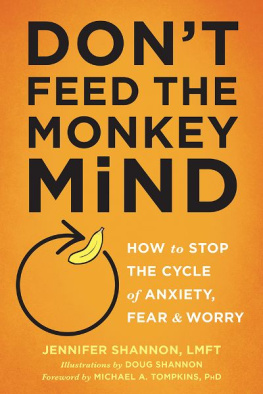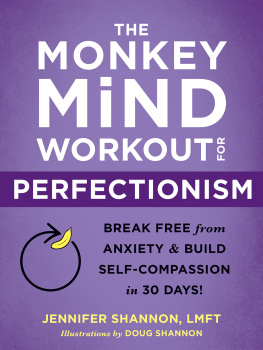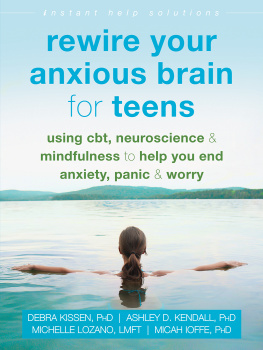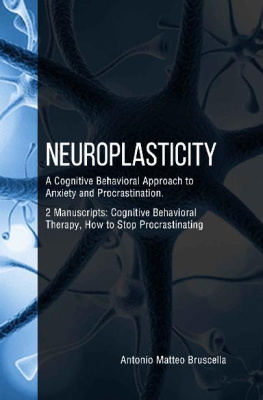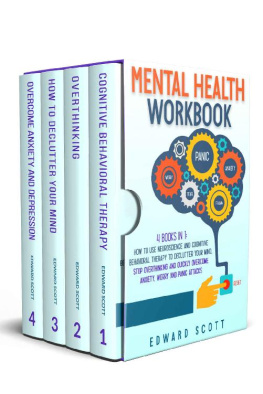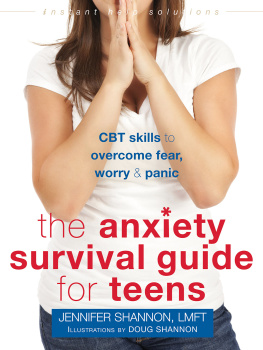
If you are ready to turn the tables on your anxiety, you can find no better book than Dont Feed the Monkey Mind. Jennifer Shannon will help you turn away from the enticing tactics of fearful worry and teach you how to return to the life you love.
Reid Wilson, PhD, author of StoppingtheNoiseinYourHead
This book is a gem for people seeking to tame runaway anxiety and upset. Jennifer Shannon takes the simple metaphor of monkey mind and fleshes it out with wisdom and simple steps that anyone can follow. Here, in plain language, is a comprehensive set of concrete steps to let your anxiety run its course and then fade. Jennifer Shannon has blended the best of cognitive behavioral methods and acceptance and commitment therapy (ACT) to produce a great contribution to the self-help literature. Here you can learn to return your energy and attention back to your voyage through life, rather than the worries and fears that have hijacked your focus. Professional psychotherapists will also find it useful. I highly recommend it!
David Carbonell, PhD, Chicago-based psychologist specializing in treating fears and phobias; author of PanicAttacksWorkbook and TheWorryTrick; and coach at www.anxietycoach.com
Dont Feed the Monkey Mind is clear and easy to understand. The book will teach you simple and powerful strategies to harness fear and worry. Jennifer Shannon teaches you how to transform your life by taking the monkey out of your mind.
Dennis Greenberger, PhD, coauthor of MindOverMood
Dont Feed the Monkey Mind begins with a well-written synopsis of basic attitudes and mental habits that perpetuate anxiety. The book follows with a set of clear, concise changes in mind-set and behavioral strategies to overcome anxiety at its roots. The monkey mind concept is an apt, original contribution. Examples of points provided by the author as well as references to her personal story help make the book accessible to readers of all kinds.
Edmund J. Bourne, PhD, author of TheAnxiety& Phobia Workbook and CopingwithAnxiety
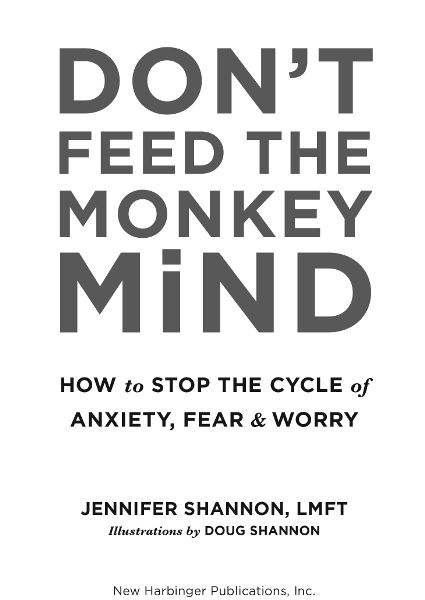
Publishers Note
This publication is designed to provide accurate and authoritative information in regard to the subject matter covered. It is sold with the understanding that the publisher is not engaged in rendering psychological, financial, legal, or other professional services. If expert assistance or counseling is needed, the services of a competent professional should be sought.
Distributed in Canada by Raincoast Books
Copyright 2017 by Jennifer Shannon
New Harbinger Publications, Inc.
5674 Shattuck Avenue
Oakland, CA 94609
www.newharbinger.com
Worry Time adapted from THE ANXIETY SURVIVAL GUIDE FOR TEENS by Jennifer Shannon, copyright 2015 by Jennifer Shannon. Used by permission of New Harbinger Publications, Inc.
Illustrations by Doug Shannon
Cover design by Amy Shoup
Acquired by Tesilya Hanauer
All Rights Reserved
Library of Congress Cataloging-in-Publication Data on file
Contents
What makes a great self-help book? Over these many years I have searched for the answer, and now Ive found it in this book. The formula comes down to three things: expert knowledge, a unique spin on the subject, and most importantly, a deep understanding, beyond the professional, about the subjectin this case, anxiety, and what it is like to struggle with it.
By her own admission, Jennifer Shannon knows her way around the subject. Through her own personal struggle with anxiety, and her years of professional practice, she has learned a few things that she is eager to pass along to her readers. Her message is timely, perfectly suited for the anxiety-ridden society we live in.
In this her third book, Jennifer presents her own unique spin on the problem of anxiety and its treatment in straightforward, inspiring language. Her central metaphor for the source of anxiety, the monkey mind, is an ancient one, but in her hands, it feels both original and fresh. In the first chapter she introduces the three basic tricks the monkey mind plays on us, and the book takes off from there, describing a host of strategies that you can use to break the cycle of anxiety and calm that frisky creature within.
Do not assume, however, that because Jennifer presents anxiety management strategies in a way that is fun and accessible that they are less powerful. We have over thirty years of research that tell us that these techniques are not smoke and mirrors. They are the real deal.
This book lays out a clear and consistent message that will help you overcome any kind of anxiety. If you are suffering, it will touch you. Here is an author who mastered her own monkey mind and who now wishes to help you master yours.
Michael Tompkins, PhD
This book will show you, in a clear and memorable way, everything you need to know to alleviate your anxiety, worry, and stress.
Thats a bold promise, and its one that I dont take lightly. One reason I feel qualified to make it is that Im a therapist who has specialized in treating anxiety disorders for twenty years. My second qualification is that I was not blessed with a relaxed, easygoing nervous system. Like you, I am hardwired for anxiety and worry.
I was an anxious child as far back as I can rememberIll skip the gory details about chronic nightmares, mysterious stomachaches, and endless worrying. When my anxiety persisted as a young adult I turned to therapy for help. My therapist had a psychodynamic orientation, commonly known as talk therapy, which is based on the premise that our problems originate in childhood and that once we have insight into them we naturally progress toward a healthier state. After a number of sessions, my therapist and I theorized that my anxiety began with my relationship with a distant and critical father, and that I developed a fear of being judged and criticized. This and other similar insights were comforting to me. It made good sense that I was anxious and it wasnt my fault. My anxiety, however, continued.
Several years later, shortly after the birth of my first child, Max, I started having panic attacks. If youve ever experienced a panic attackalmost 50% of the adult population has had at least oneyou know what I mean when I say they are really, really horrible. My entire body was seized with crippling fear, my heart pounded, and I got almost instant diarrhea. My vision became distorted, my hearing was alteredeverything seemed unreal.
Soon I was having panic attacks at random times throughout the day. Sometimes they woke me up in the middle of the night. I thought I might be going crazy. I had a child to take care of and I was beginning my professional career as a therapist. I was terrified that my panic attacks would interfere with the things that were most important to me: raising a family and working. I knew I needed help.
My new therapist and I decided that the responsibility of a newborn was probably what triggered my anxiety. We explored how my past made me vulnerable for developing anxiety. Once again I was getting all sorts of insights. But the panic attacks just kept coming.
My therapist and I thought relaxation would help, so I committed myself to practicing relaxation every day. I faithfully tried one relaxation tape after another, thinking the next might do the trick. Still, there was no relief. I found someone who did biofeedback, a type of relaxation training where you are hooked up to a machine that gives you an immediate reading as to how relaxed your body is. I was a very motivated participant, but still, the panic attacks came.
Next page
